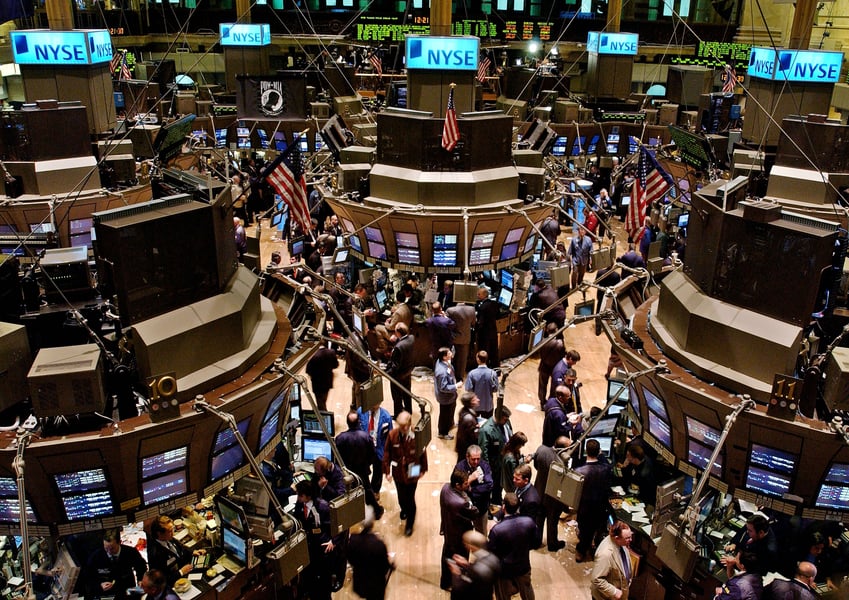The stock index hit 20,000 for the first time Wednesday morning as corporate earnings and signs that President Donald Trump will push through pro-growth policies reignited the equities rally that stalled a month ago.
Thinking too hard about investing doesn't get you anywhere, wrote Jesse Livermore, legendary trader of the Roaring '20s. To make the really big money, you just need to “be right and sit tight.”
Rarely has Mr. Livermore's advice been harder to take than in the last 12 months. Between the worst start to a year ever, the violent reversals of last March, then Brexit and the U.S. elections sending stocks into the biggest tailspins since the flash crash, almost everyone lost their nerve at some point. Now, with the Dow Jones Industrial Average sailing past 20,000, the virtues of patience, of tuning out the crowd, are on display once more
.
“Conventional wisdom didn't have a big year,” said Howard Silverblatt, the 62-year-old senior index analyst at S&P Dow Jones Indices.
The Dow rose 0.5 percent, or 99.08 points, to 20,011 at 9:45 a.m. in New York, as corporate earnings and signs that President Donald Trump will push through pro-growth policies reignited the equities rally that stalled a month ago. By 1:10 p.m., the Dow had climbed 153.02 points on the day to to 20,065.73. Boeing led gains in the index, rising 4.9% after profits climbed last quarter.
Even accounting for the stasis that has afflicted global markets for more than a month, the latest thousand-point surge in the Dow was the second-fastest ever, with shares jumping on Trump's Wall Street embrace. Led by JPMorgan Chase & Co. and Goldman Sachs Group Inc., almost $2 trillion has been added to U.S. equities in fewer than 90 days. The rally punctuates an eight-year bull run in which the century-old gauge managed to rise more than 200% without ever drowning out the naysayers.
“The bearish camp always sounds more intelligent than the bullish camp, but there's something in between, and that's being opportunistic and pragmatic,” said Quincy Krosby, a market strategist at Prudential Financial Inc., which oversees about $1.3 trillion. “Above all else, you can't fight momentum.”
To be sure, gains have settled down after velocity in the stock market reached some of its highest readings ever. The Dow had fallen in eight of the prior 11 days. That's a far cry from December, when one measure of price momentum, the relative strength index, touched its highest level since 1996.
For anyone who saw Brexit or Trump as the bull market's death knell and sold, the rally since Election Day highlights a principal danger of investing: bailing too early. A study by Bank of America Corp. on periods before and after every market peak since 1937 shows that being uninvested in the last year of an advance meant missing out of one-fifth of its return.
At the same time, investors can be forgiven for being anxious. While the market rupture that followed Britain's June 23 vote to exit the European Union proved temporary, it was one of five instances in just two years of what Deutsche Bank AG categorizes as a historical shift in equity volatility. Before that, it took two decades to record five such events.
The Dow has advanced 11% since just before Trump's election, at times posting the fastest rally for a new president since 1900. With valuations on the 30-stock gauge near the highest in a decade at a time when earnings growth is close to nonexistent, the question for investors is how much is left.
Round-number milestones are customarily dismissed by institutional investors, especially in the Dow, whose importance as a market barometer ranks a distant second to the S&P 500 Index with professionals. They nevertheless matter to individuals, according to Dan Veru of Palisade Capital Management, who sees Dow 20,000 as a clarion call to a class of investor that has largely been absent to date.
In 2016 alone, a net $77 billion was yanked from mutual and exchange-traded funds that invest in U.S. stocks. That brings the tally to about $180 billion since the bull market began, data compiled by Bloomberg and Investment Company Institute show.
“This was the first month where they opened their statement and asked, 'What the heck happened?'” said Veru, who helps oversee $3.7 billion as chief investment officer at Fort Lee, New Jersey-based Palisade. “They're underweighted to equities, so it's like a party they weren't invited to.”







